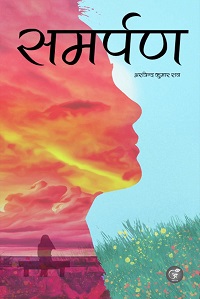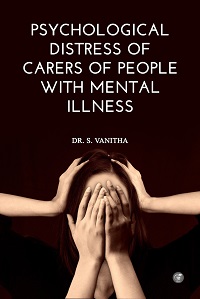Aesthetic History of World Filf
₹525.00
By: Subhash Chandra Chrakraborty
ISBN:9789391219581
Page: 336
Price: 525
Category: PERFORMING ARTS / Film & Video / General
Delivery Time: 7-9 Days
Description
About the book
The aesthetic history of world cinema deals with the study of the evolutionary transformation and growth of film aesthetics articulated by way of the imagery representation of the different versions of realities belonged to the different world orders of the human society. But since the very inception of the film making process, this had been happening through the evolution of the mediated construct of realism by virtue of the ideological, Narrative and technological transformation of the same. The transformation process proceeded by inventing some corresponding novel codes and inscribing the same in the film. The term mediation signifies a process whereby a pre-given reality was transformed by the act of filming into the filmed representation of that reality which would at best offer a perspective and at worst a distortion. In this process the contribution of Classical Hollywood cinema, German Expressionism, Soviet montage, the transition to sound, Italian neo-realism, The French New wave, New German cinema, Contemporary film movement in Asia and the Emergence of new Post Classical Hollywood cinema and the efforts of minority filmmakers are worth mention. But the principal regulator of the aesthetic movement of the Narrative film is the ideological criteria or the perspective, because on their basis the socio-psychological realities of the world are viewed and judged. And also on their basis the choice of the constituent elements and the components of the text of the Narrative and the principle of their organization for development of the plot, revelation of the attributes and the exposition of the idea are to be ascertained by the creator. Creator’s ideological slant or orientation is therefore the prime mover of the physical and cultural content and form of the Narrative. The form of the Narrative may be classed into two types. One is the Narrative form and the other is the technological form. The stage-wise successive evolutionary development and the transition of the ideological process in cinema progressed through the following phases: From naturalism to classical Hollywood style of realism, from classical Hollywood style of Realism to German style of Expressionism, from German style of Expressionism to new German style of Auterism, from new German style of Auterism to Italian Neo-realism and French new wave.Since the onset of the year1895, the evolution of aesthetics of cinema started with the emergence of two kinds of films and two modes of cinematic development: one mode is based on the perspective that cinema is the transcription of real unstaged life which may be regarded as Naturalism (Lumiere brothers) and the other mode is based on the perspective that cinema is ‘invention, artifice, illusion and fantasy’ (Melies). Ideological orientation of realism in cinema and inscription of corresponding codes started with the initiation of the latter mode. The presence of the ideological orientation of realism in Classical Hollywood Narrative cinema was apprehended through the discursive movement of social and psychological realities in the cultural space of the text of the film. But the discursive movement was carried out on the basis of the principle of ‘order/ disorder/ order restored’ or ‘equilibrium/equilibrium disrupted/ equilibrium restored’ during the construction of the plot. But in order to effectuate the same the film style has been made subordinate to Narrative and the Narrative and the characters have been made goal –oriented. Subsequent to Classical Hollywood Cinema, German Expressionism sets up a form of mediated construct of psychological realism that bade farewell the play of bourgeois aesthetics generated through the realistic mode of representation of Classical Hollywood Cinema. It mirrors the working of the unconscious zone of the psyche of the characters to the level of consciousness thereby extricating there from the symptoms of malaise or hysteria and projecting the same in the expression of the characters. It favours the adoption and injection of heavy doze of fantasy in the portrayal of realism of the characters and the environment through the use of expressionist sets and high contrast chiaroscuro lighting. The images of the characters and the environments bring into focus the contemporary realism of German society that the German mentality is on the brink of madness, obsessed with death and fatality and ready to encompass fascism. Thereafter, in the history of world cinema realism took the shape of Italian neo -realism which emerged as a revolt against the Italian government policies that cinema should be produced only to fulfill the objective of promoting the good image of Italy. The basic tenets of this movement are that.
About the author
After graduation from Calcutta university, Sree Subhash Chandra Chakraborty passed Post graduate diploma in Statistics from Indian statistical Institute in 1979 and thereafter he became interested in both Environmental science and film study and carried on study and research work in both areas under the guidance of Professor S.P. Mukherjee of Calcutta university in the research organization, Innovator set up by himself. The product of his study and research work in film are his books entitled ‘Statistical approach to the aesthetic communication of a Narrative film vol-1 and vol-2 published by Bitarka and Sagnik respectively and a Bengali book on film study namely Sahitya chalachitrer Nandanikata published by Innovator. The product of his study and research in environmental study is his book entitled ‘Introduction to earth’s environmental system’ published by Mahuya publishers. The book deals with different aspects of earth’s environmental system. He also passed Master’s degree in Sociology from Kakatiya University and post Graduate diploma in Marketing Management from B.V.B. He has also completed course on film study from Chitrabani, a renowned organization in film study and research in Kolkata. The present book like his other books on film study is the outcome of his long research work on film study and film history. The present book deals with the study of the evolutionary transformation and growth of film aesthetics articulated by way of the imagery representation of the different versions of realities belonged to the different world orders of the human society. “The book contains the Aesthetic history of film of the countries like America, Russia, Asian, European and Latin American countries.






Reviews
There are no reviews yet.